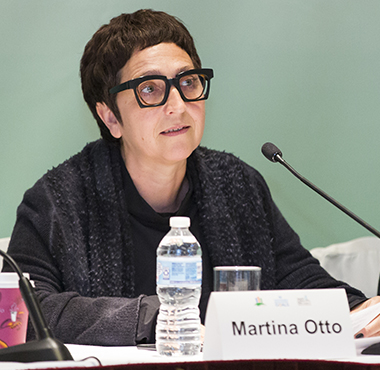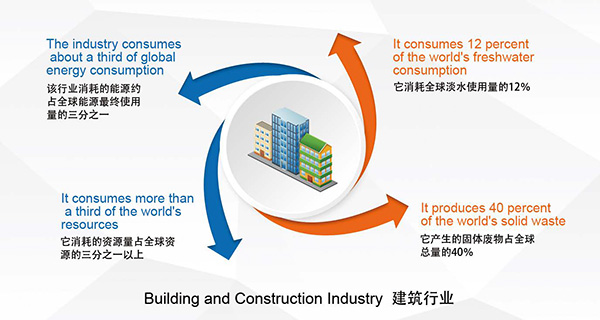


Committed to Sustainable Cities and Human Settlements for All

In Special Consultative Status with ECOSOC
Search
NameDescriptionContent
Home>>Text
Martina Otto: Implement New Urban Agenda and make the vision for sustainable urban development a reality
Source:
|
Author:gfhsforum
|
Published time: 2017-11-22
|
2266 Views
|
Share:
The way we plan land use, how we plan, design and manage cities will determine whether the amazing transformational power of urbanisation contributes to or stifles the objective of Sustainable Development for All. In a word, our goal is that we leave no one behind, and achieve sustainable and inclusive economies and environmental sustainability.

Martina Otto, Head of Cities Unit, Economy Division,
United Nations EnvironmentProgramme
United Nations EnvironmentProgramme
On behalf of UN Environment I also wish to extend a warm welcome to this event, which comes exactly one year after we had gathered in Quito to adopt the New Urban Agenda, and is held today as we celebrate World Cities Day.
The New Urban Agenda set out a clear vision for sustainable urban development: ‘just, safe, healthy, accessible, affordable, resilient, and sustainable cities and human settlements that foster prosperity and quality of life’. The time is now for implementation and making this vision a reality.
Next year, progress on several SDGs will be under review in the High Level Political Forum, conducted under the auspices of the Economic and Social Council. The theme will be "Transformation towards sustainable and resilient societies". On the list of the SDGs under review is SDG11, directly pertaining to sustainable cities and human settlements, but also several others for which strong action to build sustainable cities and human settlements will be critical.
SDG 6: Availability and sustainable management of water and sanitation for all. Goal 7: Access to affordable,reliable, sustainable and modern energy for all, and Goal 15: Protect, restore and promote sustainable use of terrestrial ecosystems, sustainably manage forests, combat desertification, and halt and reverse land degradation and halt biodiversity loss. Notably SDG 12 on Sustainable Consumption. In the implementation of the 2030 Agenda for Sustainable Development and the new Urban Agenda, the topic of this twelfth session of the Global Forum for Human Settlements is hence very timely.
More than half of the world’s population currently lives in cities, and this is expected to grow to over 70% of urbanites by 2050. It is also expected that urbanisation will be completed by 2050, with most of the infrastructure and buildings being built over the next 15 years. We cannot afford not to build sustainability considerations into these decisions and the projected 93 trillion USD worth of global demand for new infrastructure till 2030.

Cities are already responsible for some three quarters of energy and resource use. With the projected population growth and increases in consumption, we would need three planets to provision the natural resources required for that. Climate change is putting further stress on us and the natural resources on which we depend. Sea-level rise threatens many of our major cities, and the recent hurricanes in the Caribbean but also here in the US, sadly reminded us of the vulnerability of millions of people.
Only 12% of our cities comply with World Health Organisation Standards for Air Quality, with many cities facing more and more bad air days, impacting Citizen's health and life expectancy, as well as the liveability of cities.
At present cities occupy only 2% of land. But it is predicted that the total built urban area globally will more than double between now and 2030. This in not least due to the fact that current urbanisation patterns have a tendency to urban sprawl. But worst, this often comes at the expense of biodiversity and agricultural land. If urban expansion is not adequately managed, there is a serious risk of adverse impacts on the natural systems that supply freshwater, improve air quality, regulate temperatures, provide resilience against climate change and natural disasters, food, medicine and timber.
It is therefore critical to strive for 1. radical efficiencies, where value chains of different sectors are much more interlinked to use by-product or waste of one as a raw material for another, in other words circular economy and with it circular cities; 2. for low-emission, low-carbon and resilient urban development, and 3. for different values that will inspire individuals to make more sustainable lifestyle choices. Of course this comes along addressing inequalities, improving safety and economic opportunities and dealing with migration, which we will mostly see directed towards cities.
To address these complex and interrelated urban sustainability issues, we need integrated planning approaches, and the good news is that they create multiple co-benefits for cities. Urban efficiency, inclusiveness, and productivity surges not only because cities adopt new sectoral policies and approaches, or because they scale up new technologies, but also, more critically, because they develop policies to shape their forms in an efficient way, increase their connectivity to reap agglomeration benefits, and adapt governance practices and change organizations to maximize the potential of interrelated levers of efficiency, and bundle policies in a more integrated way. An efficient spatial planning of cities constitutes the greatest potential source of savings at zero or negative cost. UN Environment runs the Global Initiative for Resource Efficient Cities, launched in June 2012 at the Rio+20 Summit. Believing in the power of peer-to-peer exchanges on lessons learnt and good practices, the initiative currently works through a network of partners on a toolkit for cities to understand and manage their local resources. It helps cities understand their 'urban metabolism' based on the environmental, social and economic impact of resources that flow through cities. These include water, waste, energy, food and other materials. Urban Metabolism is a way to determine
priorities, facilitate integrated policies and plans, and measure progress over time.

The New Urban Agenda places housing at the centre of its provisions, with reference to the right to adequate housing. At times of climate change and resource overuse, only low-carbon, resource-efficient and resilient housing can be truly called adequate. Of course, choices on where to develop housing, what type of housing, the connectivity to basic infrastructure decide again on sustainability. So, also in that respect, housing is somehow at the center.
Buildings are estimated to be the single largest contributor to global greenhouse gas emissions (GHG), with about one third of global energy end-use taking place within them. The sector consumes more than a third of global resources, including 12 percent of all freshwater use. And it generates an estimated at 40 percent of global solid waste. Low-emission building, however, is not necessarily more expensive at the outset, and if we factor in operating cost and issues such as well-being, they are even cheaper in most cases. We therefore need to look at the issue with a fresh look.
To conclude, The way we plan land use, how we plan, design and manage cities will determine whether the amazing transformational power of urbanisation contributes to or stifles the objective of Sustainable Development for All. In a word, our goal is that we leave no one behind, and achieve sustainable and inclusive economies and environmental sustainability.
Copyright © Global Forum on Human Settlements (GFHS)
